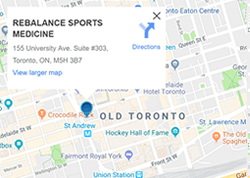Ideal Ergonomics for Smart Phone Use
 Almost everyone owns a smartphone nowadays and a large proportion of smartphone owners spend hours a day texting, emailing, tweeting, browsing the net, e-reading or using other forms of social media. This new repetitive activity has led to an increase in wrist, thumb, shoulder, neck and upper back injuries related to excessive hand held device use.
Almost everyone owns a smartphone nowadays and a large proportion of smartphone owners spend hours a day texting, emailing, tweeting, browsing the net, e-reading or using other forms of social media. This new repetitive activity has led to an increase in wrist, thumb, shoulder, neck and upper back injuries related to excessive hand held device use.
Have you ever noticed what type of posture you end up in when you are on your smart phone for a period of time? Typically while browsing their smart phones, individuals adopt a down and forward head posture as well as rounding in the shoulders and upper back. Further, the forearm muscles are tense and the wrist can be slightly twisted or tilted. The fingers and thumb move through very small motions in a repetitive manner. Common symptoms that patients complain of include:
- Clicking at the wrist or thumb
- Pain or swelling around the wrist or thumb
- Numbness in the hand, thumb and fingers
- Tightness in the forearm
- Neck and back muscle tension
- Ache around the shoulder, neck or upper back
- Headaches
Obviously these symptoms can be a nuisance. As a result, the physiotherapists at Rebalance Sports Medicine have come up with some tips to help you maintain a better body posture when using your smartphone.
- Maintain an upright posture while texting and browsing the web. Avoid awkward postures where your head is down, your shoulders excessively rounded and your spine in a flexed position.
- Hold your device up around chest height when reading longer messages or articles on your phone.
- Keep your text messages and emails brief. Longer messages mean more keystrokes and ultimately more strain on your hands and thumbs
- Try to rest your thumbs by using alternate fingers
- Maintain a neutral wrist posture when holding your device. This means your wrist should look straight relative to your forearm and should not be bent in any direction.
- Use hands free during long phone calls. Avoid holding the phone between your ears and shoulders.
- Take breaks every 15 minutes for 2-3 minutes
Alishah Merchant, FCAMPT Physiotherapist
Alishah Merchant is a FCAMPT physiotherapist practicing at Rebalance Sports Medicine in downtown Toronto.



 What to Expect From Your First Physiotherapy Visit
What to Expect From Your First Physiotherapy Visit The Benefits of Fascial Stretch Therapy [Demo]
The Benefits of Fascial Stretch Therapy [Demo] How Does Physiotherapy Work?
How Does Physiotherapy Work? Best Exercises for Low Back Pain
Best Exercises for Low Back Pain